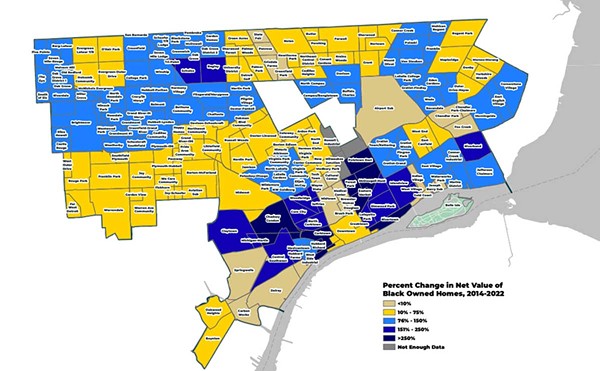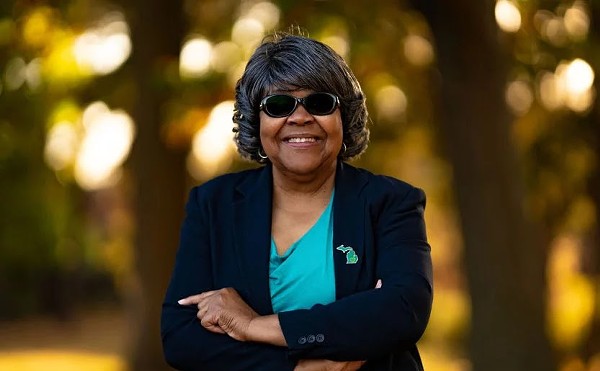Hay is an international artist who lives in Japan but also has a home in Cedar Springs, Mich. His father came to Detroit from Scotland after World War I. Thankfully, his mother and grandparents abandoned tickets for a planned trip on the Titanic due to his great-grandmother falling extremely ill. Two decades after his parents became acquainted, he was born in 1942 at Mount Carmel Mercy Hospital in Detroit.
Prior to the trans-Pacific move, he received a MFA from Michigan State University, studied at Northwestern University and was a sculpture professor at Olivet College. In 1990, while working at a Battle Creek advertising agency, he traveled to a Sister City Connection in Takasaki, Gunma, Japan. After the experience he met and married a Japanese art teacher and bought a house which had no curtains — so Hay decided to make them.
He's lived in the Japanese town since then and has taught at 32 elementary schools in the area. Hay said they manage to spend a "part of every year at our Michigan address" though. Exhibitions of his work in Japan, China, Korea, and Guam have led to eight major art awards in international competitions.
Go Where You Are, his exhibition of 15 beautiful quilts, debuted at the Dennos Art Museum in Traverse City earlier this year. The Detroit Design Festival is featuring it as one of the 70 "happenings" of the week and with good reason. The show, which opened earlier this month at the Elaine L. Jacob Gallery of Wayne State University, captures a free-spirited essence of living with master capability of artistic devices.
"My life is a voyage towards seeing," he said in a description of the exhibition. "Art is my way to awareness. I set my own course rather than follow others; go where you are."
Much as William S. Burroughs wrote — by cutting texts up and rearranging them to create something new — Hay cuts, sews and stitches entirely different fabrics together with the purpose of reaching an ultimate purpose.
"Layers started to reveal images in the many 60-centimeter squares and organized themselves into little storefronts in a rundown neighborhood," he wrote for the description of a majestic textile titled "Nightland." Using strips from Japanese kimono, Obi cloth from Korea, America and Scandinavia, "some old shirt sleeves and a little lace," Hay pushes the threshold of artistry.
“You can see his sculpture background in his work,” said Interim Gallery Director Thomas Pyrzewski. “Not too many fiber artists mix that in. So what that’s doing is creating 'wall-reliefs' which are three-dimensional pieces. Unless you photograph it from the side, you have to experience it in person to see the depth. He describes his creative process as intuitive by using the pedal on a sewing machine like a race car.”
By distinguishing foreground, middle ground and background, Hay makes it an absolute given which direction the eyes are supposed to travel when viewing his works. That's something that can be seen in all the pieces at the Jacob Gallery.
Most notable is a portrait somewhat humorously titled "Lincoln Before The Penny." Roughly 2-feet squared, it’s a perfect example of his ability to direct the viewer's eyes, and in its small dimensions it manages to convey as much depth as his enormous works. Hay stitches in grid-like fashion a bizarre recreation of the night John Wilkes Booth murdered President Abraham Lincoln.
In the foreground, Lincoln is seen getting shot by a brown revolver. But instead of showcasing blood as the end result, a graceful red ballerina is placed in the bottom right corner. She guides you through the middle ground toward a dancing duo in the center, also head-to-toe red. The flow of the stitching in the grid directs attention upward to a demonic Booth. The jaundice-eyed assassin looks directly back to the gun creating a dizzying loop. The separation of red dancers and white angelic figures in the background offers a beautiful perspective of heaven and hell.
Hay's respect of literature is apparent through a magnificent representation of his life in "See Voyage," which hangs at the top of the gallery's staircase. A line from Ernest Hemingway’s “The Old Man and the Sea” is placed in the middle: “The sail was patched with flour sacks and furled, it looked like the flag of permanent defeat.” The quilt is designed almost in a collage-manner with the stitching forming a sailboat. The top half of the boat depicts American culture, by showing a couple who appear to be ballroom dancing at a wedding. The lower half shows a Japanese samurai-sailor of sorts, and in the middle stands a figure (presumably Hay) who bridges the halves. It embodies Hay's lifelong quest for experiencing as much culture as possible.
"Life in such a different country helps cultural concepts focus into high contrast: individuality, conformity, dating, sexuality, happiness, sadness, freedom, frustration, even myth," Hay said about his work.
Reflecting such a strong desire to see diverse lifestyles — he's also widely traveled beyond living in the States and Japan — his art almost asks people to consider taking a leap of faith into new territories. Imagine if we all did that.
Also, running on the bottom floor of the Jacob Gallery is a video art exhibition by Lee nam Lee. The multiple projections are re-creations of masterpieces done in a contemporary manner.
“Both of our shows have gotten a lot of good feedback,” Pyrzewski said. “The medium of [Lee’s] work has sparked a lot of interest because you won’t see anything like that in Detroit.
“It’s a good exhibition to provoke interest for students. It makes them want to look at [masterpieces] again. Opening night we had 250 [people], daily I’d say we have 20 people come through which is good considering most of our guests usually come the first night."
Jim Hay's "Go Where You Are" is running weekly Tuesday-Thursday 10 a.m.-6 p.m.; Friday 10 a.m.-7 p.m through Oct. 21 on the second floor of the Elaine L. Jacob Gallery. There will be a symposium and lecture by Hay in the gallery and the Schaver Music Recital Hall October 6 from 5-8:30 p.m. He'll also lead a two-day quilting workshop on Friday, Oct. 7, and Saturday, Oct. 8. The workshop is open to artists of all skill levels. Contact [email protected] for workshop and registration information.
Ryan Felton is a Metro Times editorial intern.






